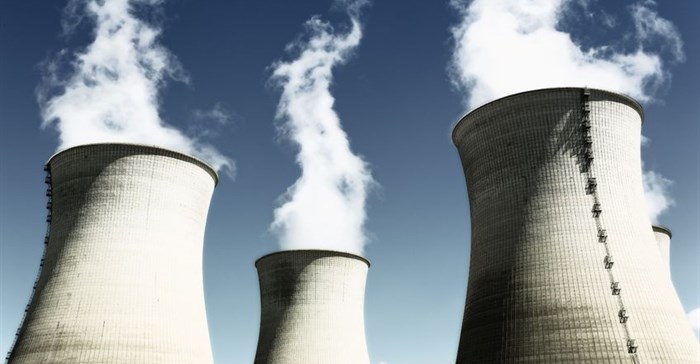
The source and scale of funding for the nuclear energy programme has been a point of contention both in the government and with the public since it was put on the table by President Jacob Zuma two years ago.
Writing for Business Day on Friday, 16 September, Koko says the improvement in Eskom's finances - including improved access to finance, improved revenue from a better operating plant and the completion of the build programme - will allow it to build substantial reserves.
"This improving trend will continue over the medium to long term and will culminate in the company having cash balances in excess of R150bn by year 10 of the plan. These cash resources could be deployed to fund the new nuclear build programme. Furthermore, the 2016-17 corporate plan has significantly increased the borrowing programme of Eskom to R327bn, which is an increase of R90bn," he writes.
The targeted cost of nuclear energy should be R1.00/kWh, he says. The cost of wind energy is R0.69/kWh and that of solar PV is R0.87/kWh. These would need to be combined with gas - which is far more expensive - to create base-load power.
Koko says SA needs to choose a proven and affordable model for the nuclear plant and not go for top-of-the-range options.
"One needs to identify a vendor with an active nuclear programme, have a standard reference plant design, and a successful track record of exporting nuclear reactors." Vendor countries with a reference plant design include China, India, Japan, Russia, France, the US, Canada and South Korea.
In an interview on Thursday, Koko said the standard Generation 2 plant, such as those under construction by Rosatom in Turkey and Saudi Arabia, would be sufficient.
In the West and developed world, nuclear plants are now built according to generation 3 standards, with a double concrete dome to withstand the impact of an aircraft, and core catcher, which is designed to catch and contain the core in the event of it melting out of the bottom of the reactor. The new standards were introduced after the Fukushima disaster in 2011.
Generation 2 plants do not have these additional features, which are seen as responsible for huge time and budget overruns in post-Fukushima projects.
"What I'm saying is don't go for the cutting edge. It's going to cost you an arm and a leg. Go for a reference standard plant that is licensed already by a regulator elsewhere, from a vendor with a domestic nuclear programme that is thriving and that has a history of successfully exporting its model," Koko said.
Energy Minister Tina Joemat-Pettersson has said the request for proposals would be issued by September 30.
However, the process is being challenged by Earthlife Africa and the Southern African Faith Communities Environmental Initiative, whose application will be heard on December 13. The two seek to have the procurement declared unlawful.
Source: Business Day

For more than two decades, I-Net Bridge has been one of South Africa’s preferred electronic providers of innovative solutions, data of the highest calibre, reliable platforms and excellent supporting systems. Our products include workstations, web applications and data feeds packaged with in-depth news and powerful analytical tools empowering clients to make meaningful decisions.
We pride ourselves on our wide variety of in-house skills, encompassing multiple platforms and applications. These skills enable us to not only function as a first class facility, but also design, implement and support all our client needs at a level that confirms I-Net Bridge a leader in its field.
Go to: http://www.inet.co.za